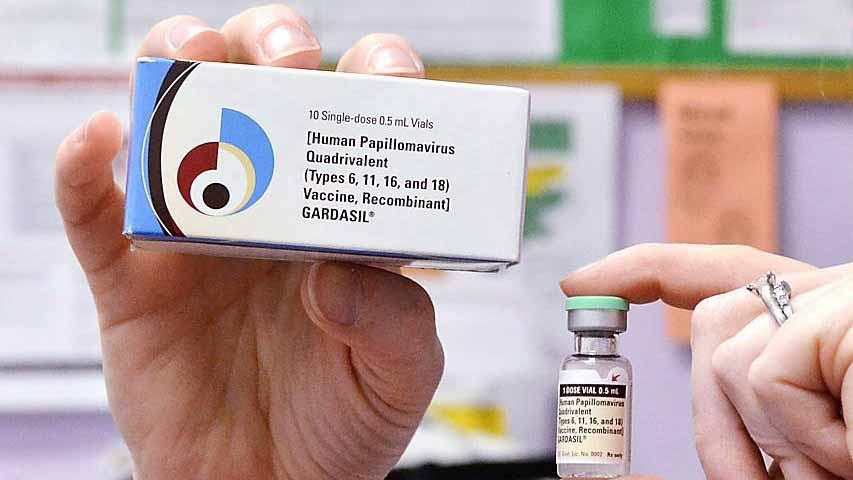The human papillomavirus (HPV) is a multi-strain DNA virus from the papillomaviridae family, and is the most common sexually transmitted infection. While infection most often manifests as either asymptomatic, or in the form of treatable genital warts, certain strains have been identified to cause various life-threatening cancers. These include more than 1,300 cases of cervical cancer in women in Canada every year, as well as oral cancers and various anal and penile cancers in males.
Numerous studies have shown that the HPV vaccine successfully prevents HPV transmission and reduces the rate of genital, anal, mouth, and throat cancers. Vaccines such as Gardasil and Gardasil-9 are administered to prevent transmission of the virus and therefore lower cancer incidence for both men and women. A recent article published in the journal Pediatrics studied the effectiveness of the vaccine between 2006 and 2012, mostly in girls 11 to 12 years old. Researchers found that within six years of introducing the vaccine. which immunized recipients against four strains of HPV, the incidence of those strains went down by 64 per cent in the US. Despite this evident success, vaccination rates of young women against the virus remain at a meager 60 per cent across North America.
The vaccine has also proven effective in young men, leading to a decrease in HPV prevalence by 65.5 per cent; however, vaccination rates amongst young men are even lower than they are for women. The Centers for Disease Control and Prevention (CDC) reports that only 41.7 per cent of young men between ages 14 and 17 received the vaccine in 2014.
The CDC recommends that young men and women aged 11 and 12 be immunized, as the vaccination is most effective prior to sexual activity. McGill Cancer Epidemiology Professor Mariam El-Zein outlined the reasons behind why many individuals remain unvaccinated.
“[This phenomenom is often the result of] parental beliefs, safety concerns—although the vaccines are safe—and unwarranted fear of promiscuity following vaccination,” she explained.
The annual National Immunization Survey highlights that it is not hesitant parents, but rather doctors who are responsible for the low rates. Studies find that many doctors are hesitant to recommend the vaccination to young women due to its sexually transmitted nature, avoiding an uncomfortable conversation with the parents and their children.
Other studies suggest, however, that low vaccination rates among young men are primarily due to the misconception that HPV only causes cancers in males after having sex with other males. Efforts to increase immunization rates in young men therefore focus on raising awareness of HPV’s prevalence in heterosexual males to remove this stigma and improve peer acceptance.
The vaccine is also less available to males.
“The free vaccination program against HPV mostly targets girls,” El-Zein explained. “Not all provinces have a publicly funded vaccination program for boys.”
Since 2013, only P.E.I, Alberta, Nova Scotia, and British Columbia provide free vaccinations for boys. Certain studies suggest that only immunizing girls will offer sufficient protection for boys, a notion called herd immunity; however, not all girls and young women are receiving the vaccine, and currently the vaccine is targeted at heterosexual individuals.
Despite the vaccine’s proven efficacy, low vaccination rates appear to be the product of a lack of communication.
“[We must raise awareness through] consistent HPV vaccination messages to the public by experts and the media,” El-Zein said. “[We need to encourage] clinicians [and] health care providers [to] recommend the HPV vaccine, [raise] awareness at schools of the burden of HPV-related disease, and [reinforce] vaccine safety and efficacy.”









